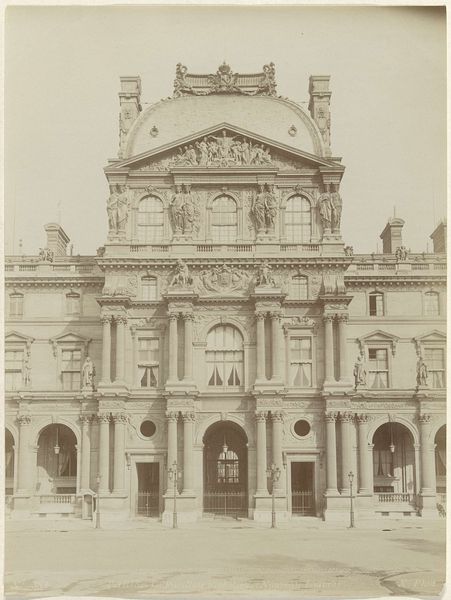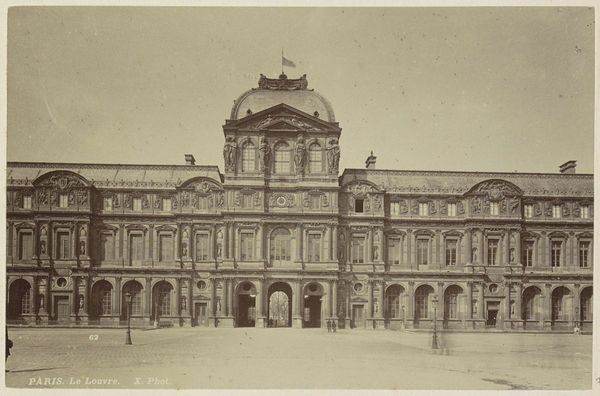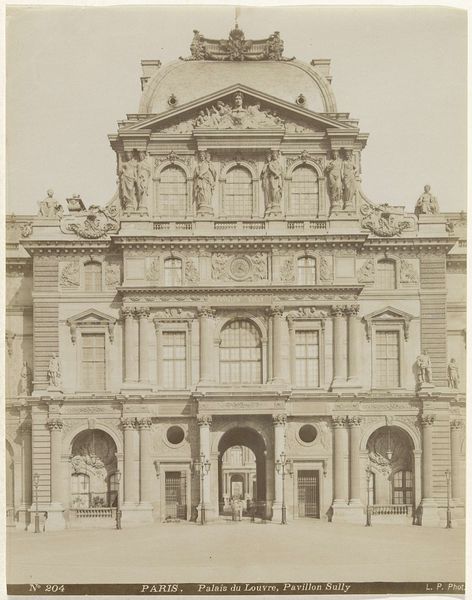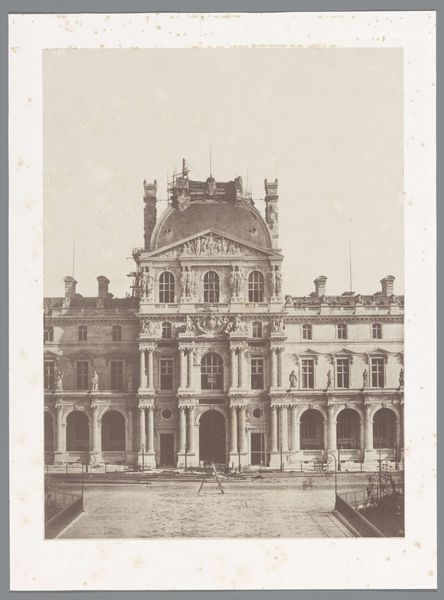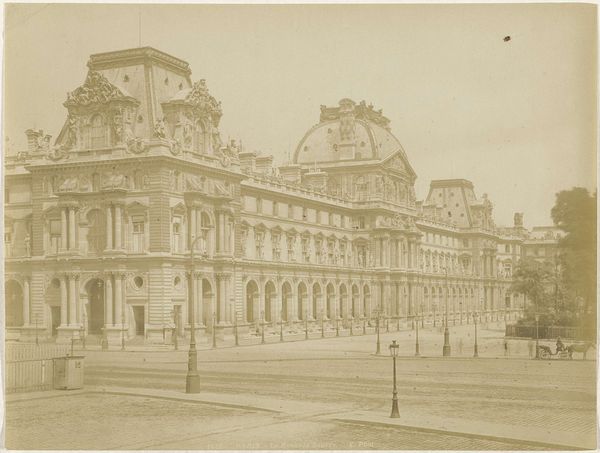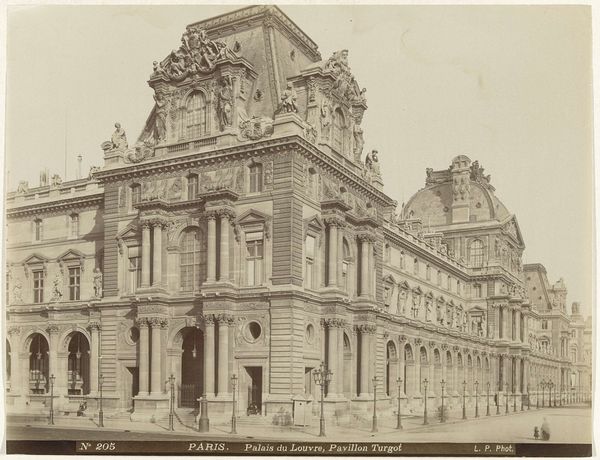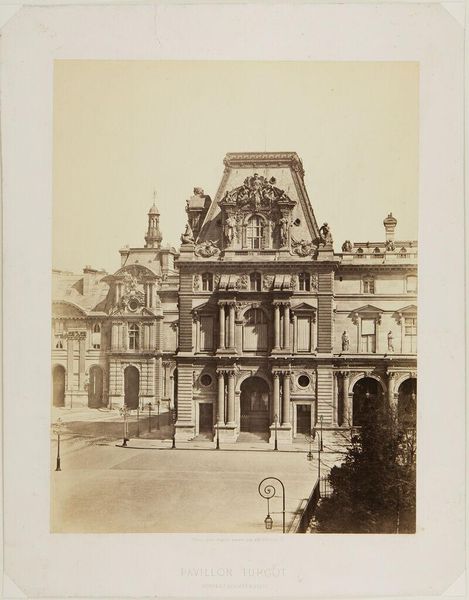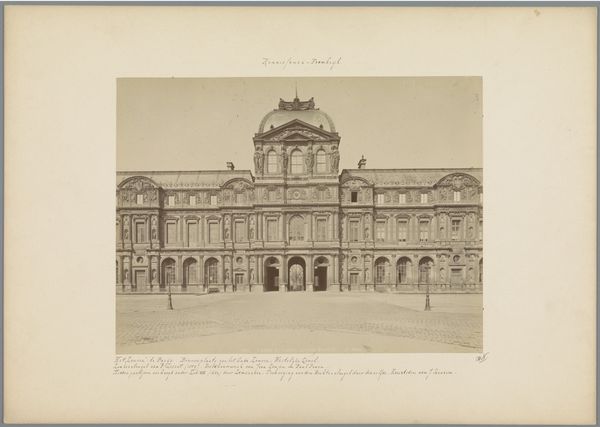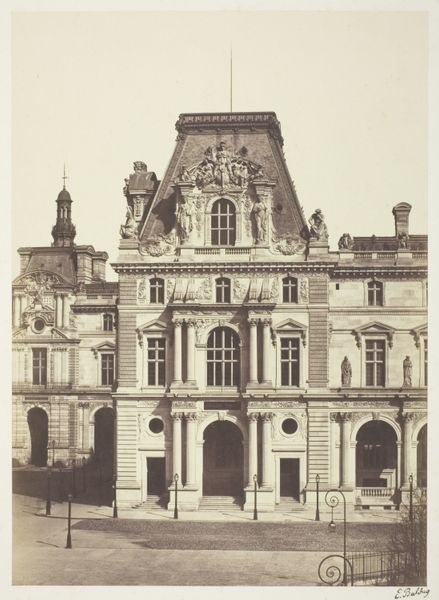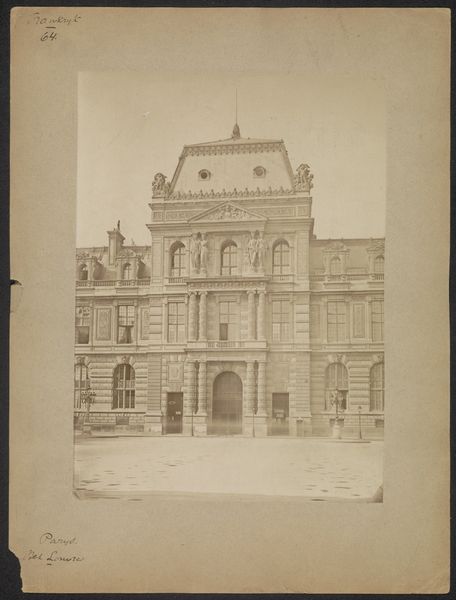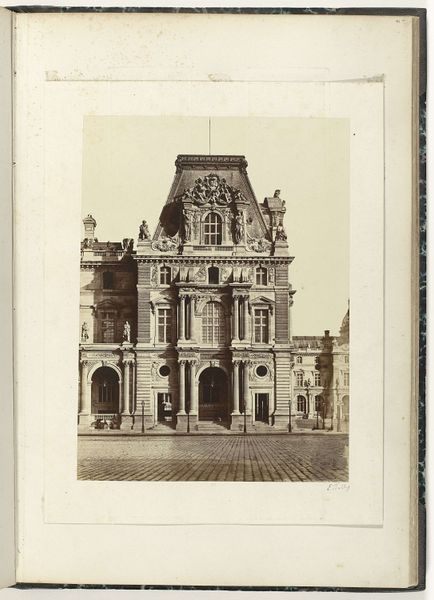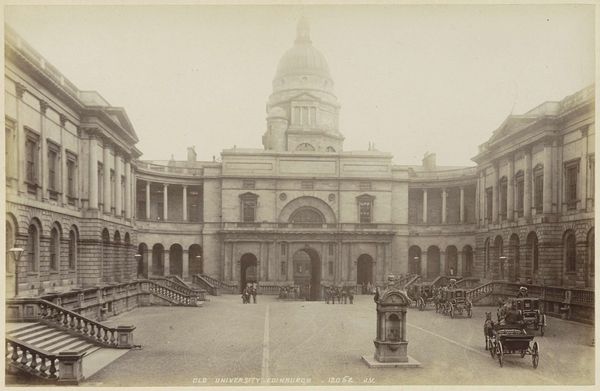
Dimensions: height 213 mm, width 155 mm, height 398 mm, width 309 mm
Copyright: Rijks Museum: Open Domain
Albert Mansuy made this photograph of the Pavillon du Louvre in Paris, sometime in the mid-19th century. It presents the Louvre as a monument to French cultural ambition. It's a museum, of course, but Mansuy's image also tells us about the role of art in shaping national identity. The photograph shows the architectural grandeur of the Louvre, which was redeveloped during the Second Empire, under Napoleon III. The building’s imposing façade, decorated with classical sculptures and intricate carvings, creates a sense of historical continuity and cultural authority. This aesthetic was favored by the French state. The Louvre was not simply a repository of art, but a symbol of France's self-image as a centre of civilization. To understand Mansuy's photograph better, we might turn to archives from the period and study its exhibition history. By exploring the connections between art, power, and national identity, we can gain a deeper appreciation of this photograph and the institution it depicts.
Comments
No comments
Be the first to comment and join the conversation on the ultimate creative platform.
